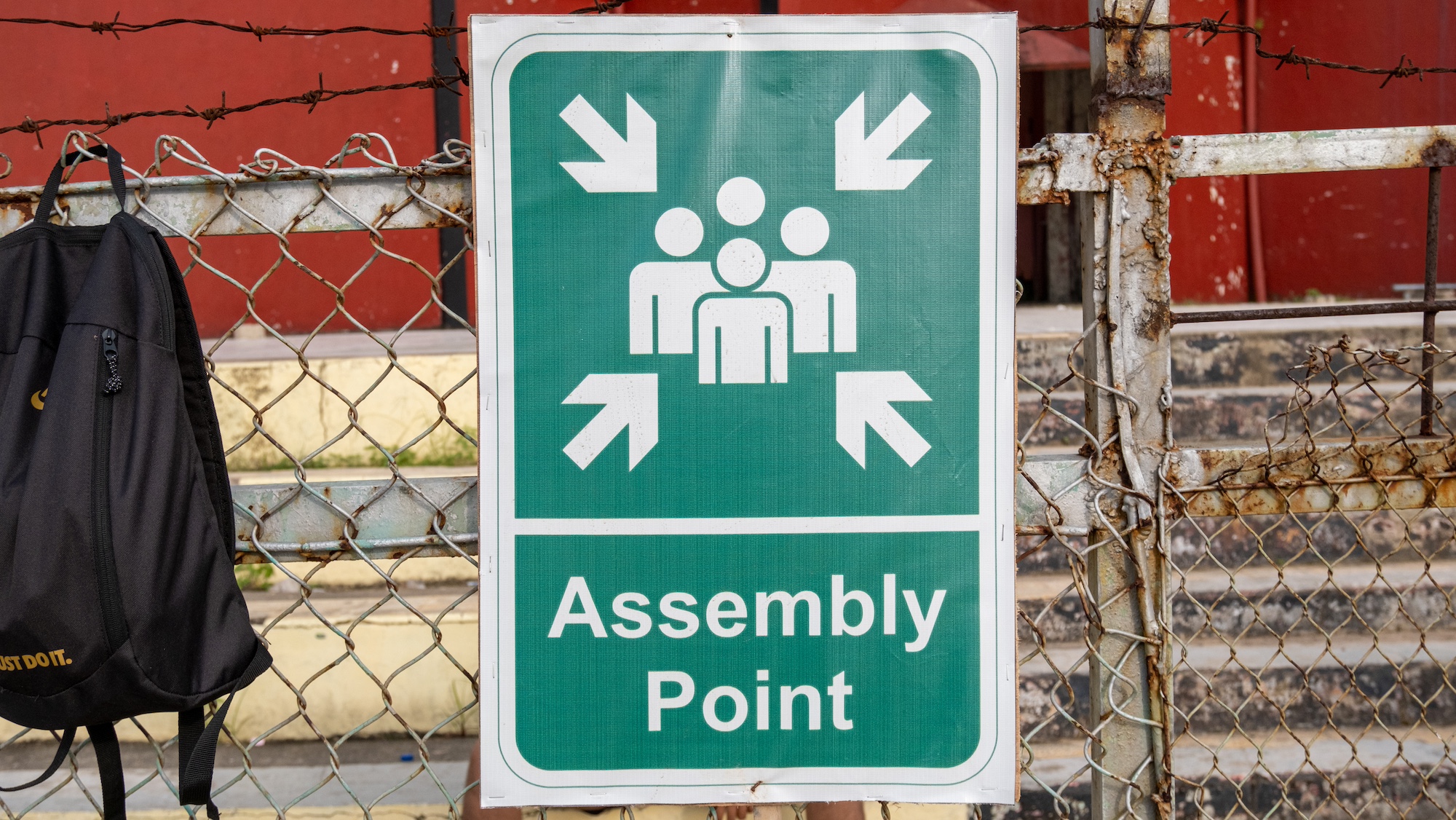A school evacuation has occurred, and all steps following your emergency management plan have been implemented. But what do you do once staff and students have gathered in the designated assembly area?
Proper management of this area is crucial for safety and orderliness and to ensure everyone has been accounted for.
Here are five tips for managing assembly areas during school evacuations:
- Designate Assembly Area Leader
Appoint responsible individuals as assembly area leaders. These leaders should be trained in emergency management procedures and have the authority to coordinate activities in the assembly area, such as accounting for missing individuals, providing first aid if necessary, and communicating with emergency services.
- Undertake Headcounts & Attendance
Once at the assembly area, use attendance sheets or electronic check-in systems to track who is present. Ensure that everyone stays in the assembly area until the all-clear signal is given or further instructions are provided by emergency personnel. This prevents premature dispersal and helps account for all individuals.
- Prepare for an Extended Stay
Ensure that assembly areas have emergency supplies like first aid kits, water, fire extinguishers, flashlights, battery-operated radios and blankets. Additionally, consider providing amenities like seating or temporary shelter if the situation requires an extended stay. Or consider where you will relocate staff and students to.
- Consider Complex or Special Needs
Identify individuals with complex or special needs, such as students with mobility impairments, neuro diverse or medical conditions, and ensure their needs are considered in your Emergency Response Plan.
- Communicate
Follow the communications plan that was prepared as part of the school’s emergency management planning process, including communicating with emergency services, parents, staff, and students. Communicate using verbal and non-verbal signals, megaphones, 2-way radios, whistles, or other audible signals to gather attention and convey instructions. Coordinate with local authorities for assistance and resources if necessary.
In addition to these tips, always consider the specific needs of your school and community when developing and managing assembly areas during evacuations.
Tailoring your plans to your unique circumstances will enhance the safety and effectiveness of the evacuation process.
If you would like to learn more about how Bounce Readiness can provide Emergency Management training and tailor a suitable evacuation plan, please get in touch.

